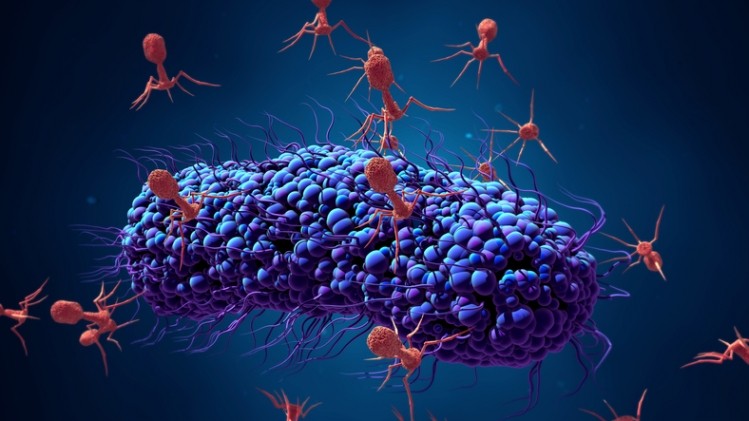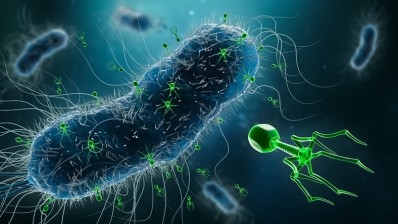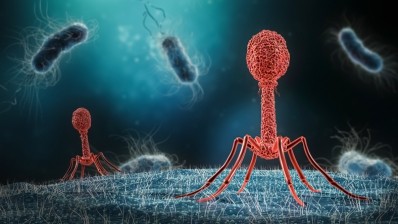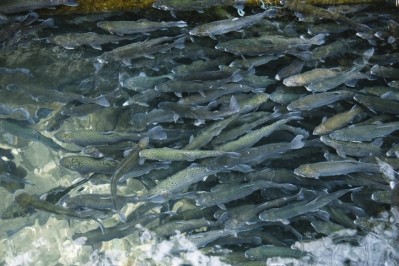AB Agri: Phages offer a promising tool against Salmonella infections in poultry

The researchers examined the potential of delivering bacteriophage via feed to reduce Salmonella colonization in chickens.
An abstract of the study was shared at this week’s Poultry Science Association Annual Meeting, held online.
Martha RJ Clokie, professor of microbiology at the University of Leicester, commented on the findings: “This study offered us an opportunity to further explore one of the exciting emerging themes in bacterial virus research. The results highlight phages as a promising tool to target bacterial infections in poultry.”
AB Agri’s director of innovation, Nell Masey O’Neill said: “Foodborne diseases, including Salmonellosis in humans, are a significant world health challenge. According to the World Health Organization almost 1 in 10 people fall ill and 33 million of healthy life years are lost every year. This study shows that phage may be a useful weapon against this challenge, helping our industry produce safer food.
“Furthermore, our industry has been responsible by taking growth-promoting antibiotics out of poultry diets, but that leaves us with gut health challenges. Phages could offer a potential solution, so we were keen to explore the possibilities with academic partners at the University of Leicester.”
When asked where the company was at in terms of the work being done on phages, a representative told us: “We are currently exploring commercial applications, but there are significant hurdles to overcome before bacteriophage can be used in commercial feed, not least regulatory approval. No product of this type is currently registered in the EU or GB, either as a zootechnical feed additive or veterinary medicine product.”
Design of the study
The objective of this study was to determine if a phage cocktail delivered in feed was able to reduce Salmonella colonization in experimentally-challenged chickens.
Some 672 Ross 308 male broilers were used, and the trial was conducted at Drayton Animal Health, in the UK.
Chickens were divided into six treatments groups and each group included 112 chickens, said the team.
The treatment groups were
- T1 (control birds)
- T2 (birds fed the phage diet at a dose of 106 PFU/g)
- T3 (challenged birds)
- T4 (birds fed the phage diet at a dose of 105 PFU/g and challenged)
- T5 (birds fed the phage diet at a dose of 106 PFU/g and challenged)
- T6 (birds fed the phage diet at a dose of107 PFU/g and challenged)
The phage cocktail was mixed with starter (0-13 days), grower (14-27) and finisher (28-42) diets.
Chickens were challenged via oral gavage on day 4 with S. Typhimurium strain 4/74 at a dose of 5 x 106 CFU/per bird, said the researchers.
Pooled fecal samples from each pen were collected on days 6, 7, 8, 9, 10, 14, 28 and 42, the last day of the trial, to determine Salmonella and phage counts, they reported.
Xylose Lysine Deoxycholate agar media (Sigma) was used for enumeration of S. Typhimurium from fecal sample and lysogeny broth media was used for phage counts. Differences in log transformation were compared between treatment groups, said the team.
Findings
In fecal samples collected on days 6, 7 and 8 the authors observed that Salmonella counts were not significantly different in the challenged treatment groups. On day 9, the average fecal Salmonella counts from chickens in T6 were 6.33 x 104 CFU/g, which was significantly lower than the counts from group T3 (8.40 x 105 CFU/g). Furthermore, Salmonella was only isolated from 4/16 pens in T6 versus 12/16 pens in treatment group T3.
Further significant reductions in Salmonella counts were observed in phage treated groups T4, T5 and T6 (~2.4 x 102 CFU/g) versus T3 (~6 x 104 CFU/g) in fecal samples collected on day 28.
By day 42, no Salmonella was detected in the fecal samples collected from group T4 given the lowest phage dose, and in groups T5 and T6 Salmonella was only isolated from 3/16 and 2/16 pens respectively, noted the team.
In comparison, Salmonella was isolated from 7/16 pens in T3, they said.
“We showed delivering phages via feed was effective at reducing Salmonella colonization in chickens. The lowest phage dose was the most effective and reduced Salmonella counts to below detection limits by the end of the trial.”















